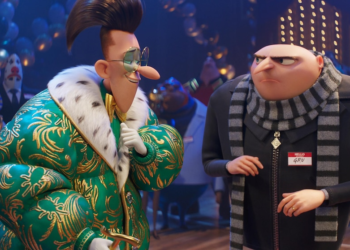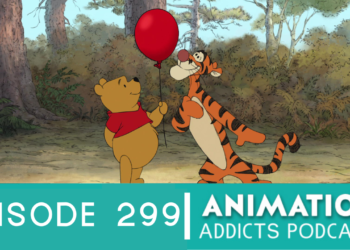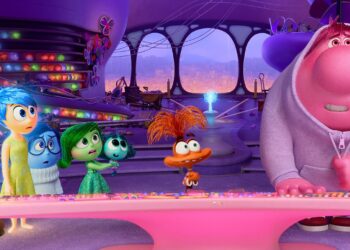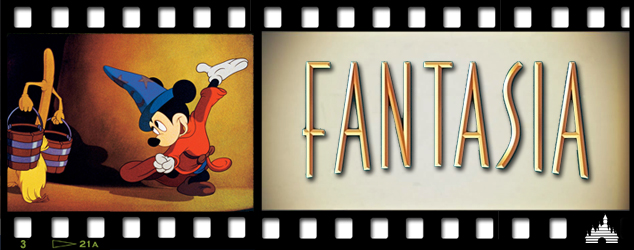
Fantasia is one of the most unique animated films of all time. It is considered by many, myself included, to be one of the greatest films that Walt Disney every produced. It is beautiful, frightening, entertaining, funny, and so much more. It is a film experience unlike any other.
Fantasia combines classical music with animation in a way that even most who dislike classical music will find something to love about the film. Whether it’s Mickey Mouse’s starring role in The Sorcerer’s Apprentice, the adorable and majestic Pegasus family in The Pastoral Symphony, or the titanic clash of the dinosaurs in The Right of Spring, there is something for everyone in this film.
Development
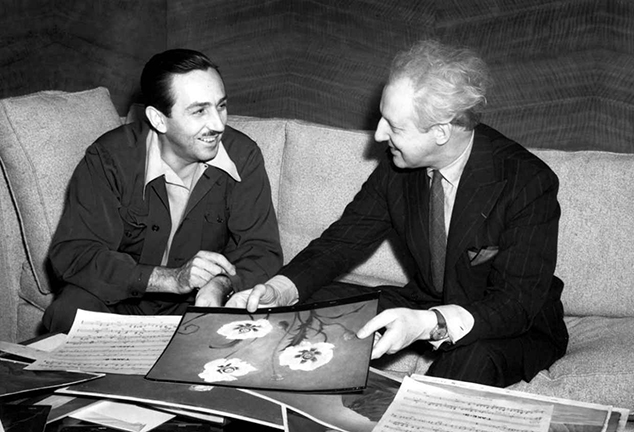
The idea for Fantasia started all the way back in 1936 when Walt Disney envisioned a short starring Mickey Mouse. The Sorcerer’s Apprentice was to be based on a poem by Johann Wolfgang von Goethe, set to music by Paul Dukas, and be something much more than the average Mickey Mouse cartoon short. After receiving the rights to use Dukas’ music in 1937, Disney met with conductor Leopold Stokowski, and the idea for The Sorcerer’s Apprentice began to evolve into something more. When the short went over-budget, Disney knew that without expanding the idea into a feature, the short would never earn back its budget on its own. Thus, a full length animated feature was born: The Concert Feature, a name which of course did not stick for long.
Throughout 1938, Disney, Stowkowski, and presenter Deems Taylor, along with numerous other writers and department heads at Disney met to discuss ideas for potential segments. Many ideas were discussed and set aside in the quest to find the perfect pieces. None of these abandoned ideas were bad; in fact some would later be used to create new animated shorts, sequences for some of the studio’s later package films, and even a sequel almost 60 years later.
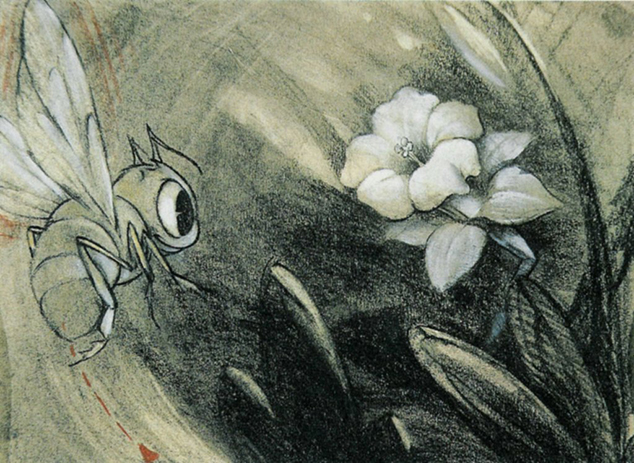
The pieces finally chosen represented a vast array of styles and designs, ranging from abstract animation to mythological creatures to, at the time, scientifically up-to-date depictions of ancient life. Almost everything about this movie was experimental and new; no one would have seen or heard anything like it before.
During the development of Fantasia, Disney came up with some rather innovative ideas for the film. He wanted Fantasia to be an ever-evolving experience with regular re-issues, debuting new segments, and retiring older ones with every re-release. He wanted to experiment with 3D animation, originally envisioning Toccata and Fugue as a 3D segment, with cardboard stereoscopic frames given out to movie-goers. He also wanted to release scents into theaters timed with specific images on screen, such as flower scents during The Nutcracker Suite. While these ideas were eventually abandoned, one of Disney’s greatest ideas did stick.
To ensure the uniqueness of the musical experience, Disney worked with RCA to pioneer a new form of sound system which he called Fantasound. This system was unlike any other available at the time; it was a stereophonic surround sound system, which might not sound too impressive to young listeners today, but it was absolutely groundbreaking at the time and innovated some of the same processes we still use today. Basically, Walt Disney invented surround sound.
Release
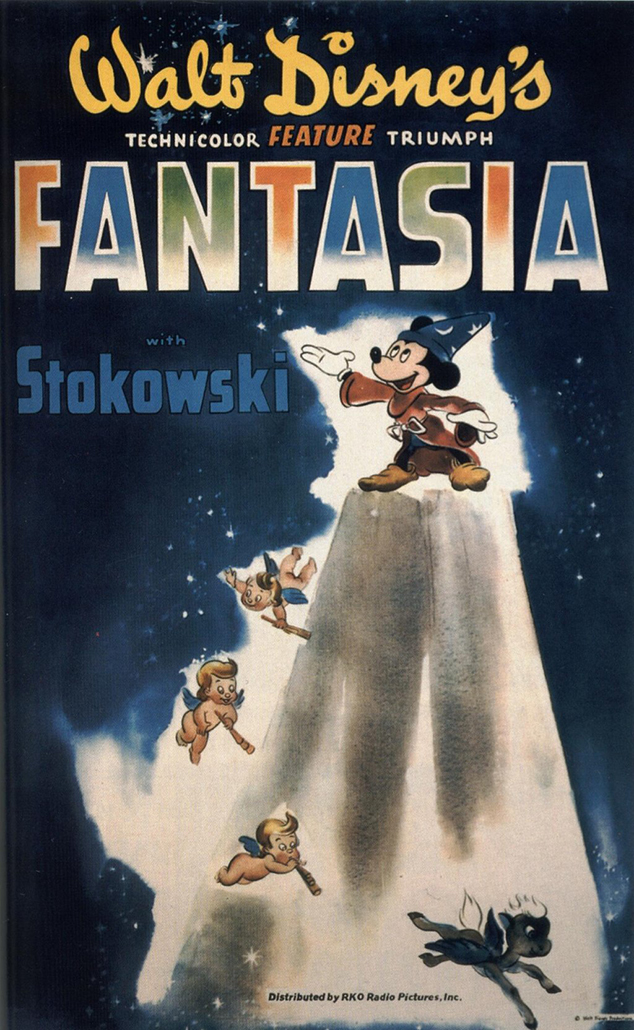
Fantasia debuted in November of 1940 as a roadshow attraction and ran for an amazing 57 weeks through February of 1942. Disney leased theaters and installed Fantasound in preparation for this massive event. The film was wildly successful attracting so many movie-goers that theaters had to hire extra staff to accommodate all the ticket inquiries. However, despite the enormous popularity of the film, it actually led to a substantial loss for Disney, as the costs for leasing theaters and installing Fantasound systems, coupled with World War II cutting off a European release, followed by the Fantasound systems having to be dismantled for parts for the war effort meant that Fantasia actually put the studio in the hole.
To bring in some of the money lost, Disney allowed RKO to distribute Fantasia in a wide release around the country. You can watch the original trailer for that release here.
However, with no involvement by anyone at Disney, RKO made a number of significant cuts to the film, removing most of Deems Taylor’s narration, as well as the entire,Toccata and Fugue segment. As it was too cost prohibitive for theaters across the country to install Fantasound systems, RKO also removed the surround sound track, replacing it with a much less impressive mono soundtrack. Then it was played as the second half of a double billing with Valley of the Sun, a western film.
Re-Release
In 1946, it was re-released with the missing pieces restored, though the narration had been shortened. This cut ran for an hour and fifty-five minutes and was used as the basis for most future re-releases.
By 1955, the sound quality of the films had begun to deteriorate, so an original copy of the Fantasound print was sent to Hollywood where a new stereo mix was created. In 1956, it was re-released once more, this time in wide-screen, with the film stretched and cropped to make it fit into the widescreen aspect ratio. This decision garnered a lot of criticism, as the integrity of the original film had been compromised to achieve the widescreen look. In 1963, it was released one last time before Disney’s death, this time in both standard and widescreen formats.
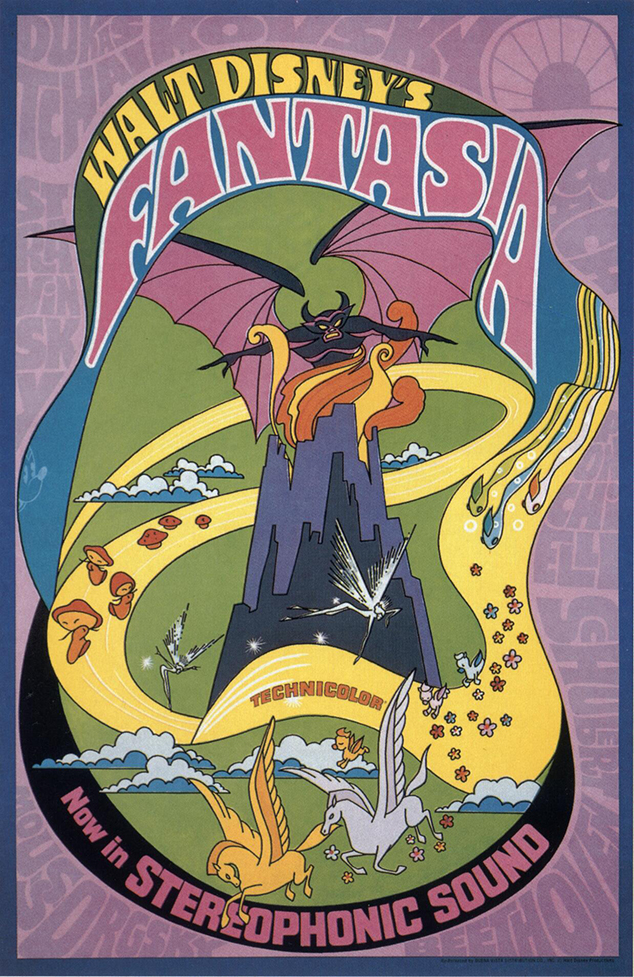
In 1969, Disney finally began to turn a profit from Fantasia. For this release, it was promoted with a psychedelic-style advertising campaign and became extremely popular with teenagers and college students. This newfound popularity has long been rumored to have been from young people taking drugs before going to see Fantasia, in order to undergo a psychedelic experience during the film. Regardless of why it became popular, this period of time brought Fantasia back to the public eye and led to multiple releases in art houses and college towns through the mid 70’s, as well as new theatrical re-releases in ’77, ’82, ’85, and ’90.
During the 1969 release, a few cuts were made to the film that have not ever been restored. In the original version of the films, during The Pastoral Symphony, the centaurettes and Bacchus are attended to by black centaurettes. Ordinarily this wouldn’t be a problem; there are still some black centaurettes in the film who are part zebra after all (and they are the best centaurettes in my opinion), but these centaurettes, named Sunflower and Otika, unlike the zebra centaurettes, were designed as racist caricatures. They were designed to be stereotypical blackface caricatures and basically used as slaves for Bacchus and the other centaurettes. Sunflower and Otika were edited out with cutting and cropping methods in 1969 and then later digitally removed for the home video releases. They have not been seen since then, save for a few images that have shown up online.
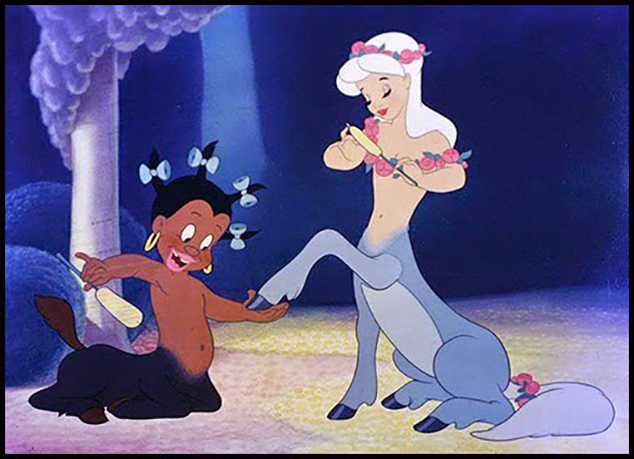
During the releases in the ‘80’s, a new soundtrack was recorded in Dolby stereo, and Deems Taylors narrations were once again removed. A new, shorter narration was added, as the studio felt that modern audience were more sophisticated and knowledgeable about music, and thus did not need the original narration.
Today
For the 1990 release (the film’s 50th anniversary), the original prints of Fantasia, which had been untouched since 1946, underwent a two-year restoration process, restoring not just the animation, but the original soundtrack as well, including the original narration by Deems Taylor. This release went on to gross $25 million and is the version that everyone today has become familiar with. You can see the trailer for this re-release here.
Fantasia was released on home video in 1990, 2000, and 2010. For the latter two releases, the restored audio tracks for Deems Taylor’s narration had been lost so Disney hired voice actor Corey Burton to record new narration for the film. Unlike the version in the 80’s however, Burton recorded the same lines spoken by Taylor, and his voice was dubbed over the original footage. This choice has been quite controversial, but to this day, Taylor’s original narration has not been re-restored.
Today, Fantasia is widely regarded as not only one of Disney’s best films, but also as one of the best films in the world, with the American Film Institute ranking it as #58 in its top 100 Years…100 Movies list in 1998, and as the fifth greatest animated film in its 10 Top 10 list in 2008.
The Film
With all this history surrounding Fantasia, we haven’t talked much about the film itself. To do so, I will go through the film one segment at a time.
Toccata and Fugue in D Minor – Johann Sebastian Bach
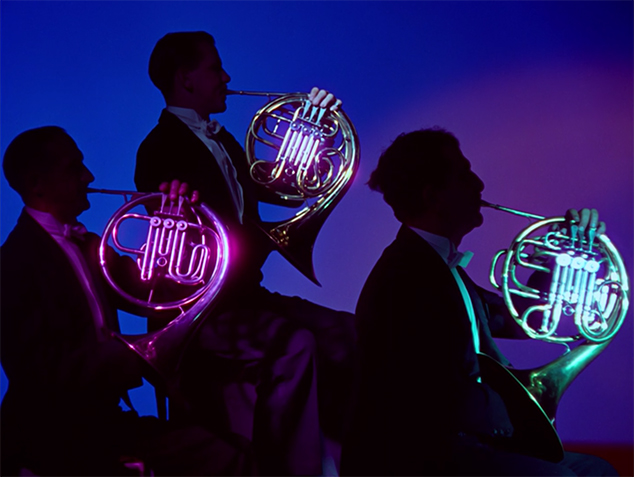
The film opens with the now iconic footage of the orchestra against a blue background, tuning their instruments. Master of ceremonies Deems Taylor enters to introduce the program. The first segment is almost completely abstract. It begins with the live action shots of Stokowski conducting the orchestra, silhouetted against a colored background, almost becoming animation themselves. The live-action shot transitions into abstract forms, animated violin bows, and strings flying through clouds; lights, sparkles, and lens flares blinking through the sky; waves and lines flowing over abstract landscapes and alien atmospheres; surreal scenes of colorful surfaces undulating to the music; and heavenly scenes ending in a gorgeous red sunset back in front of Stokowski.
The Nutcracker Suite – Pyotr Ilyich Tchaikovsky
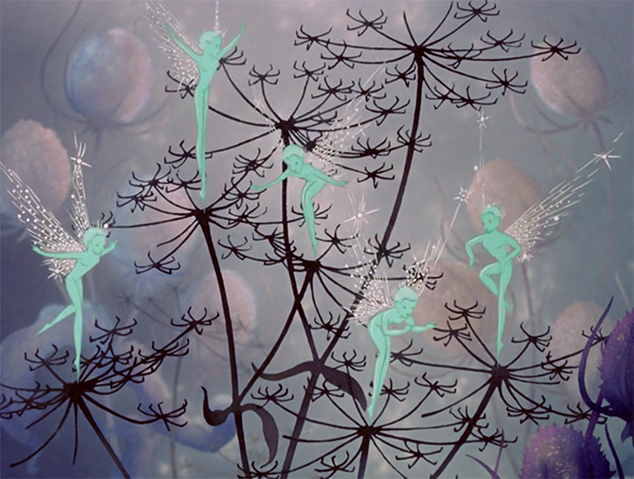
Taylor introduces the segment which begins on Stokowski and immediately transitions to animation. Scenes of fairies ushering in spring, creating dew, and causing flowers to bloom during the Dance of the Sugarplum Fairies. Mushrooms dance to the Chinese Dance, flowers float through the air and become dancers on the water during the Dance of the Flutes, goldfish perform an underwater ballet to the Arabian Dance, while thistles and flowers take the forms of dancers for the Russian Dance. Finally, we return to the fairies who are transitioning the seasons from fall to winter during the Waltz of the Flowers. Fluffy seeds and leaves fly through the air, dancing to the music, and falling to the ground as they die.
The Sorcerer’s Apprentice – Paul Dukas
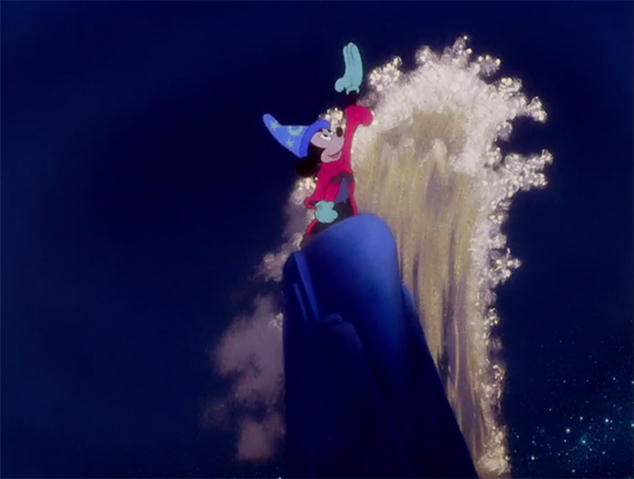
In this iconic segment, Mickey Mouse is the apprentice of a sorcerer, Yen Sid. Most Disney fans are already aware of this fact, but just in case you somehow did not know, this sorcerer was named after Disney himself. Yen Sid, is Disney spelled backwards. The apprentice gets tired of doing his work the hard way, so he takes the sorcerer’s hat while he sleeps, enchanting a broomstick to carry water for him. When he falls asleep, the broom continues carrying water without him, causing a disastrous flood which quickly gets out of control. It is only through the intervention of the sorcerer that the chaos is brought to an end. The segment is closed as an animated Mickey approaches a live action Stokowski to shake his hand.
The Rite of Spring – Igor Stravinsky

One of the most epic segments of the film, and probably my personal favorite, The Rite of Spring tells the story of the first few billion years of evolution, as close to what scientists of the day thought had happened at the time. Beginning with a shot of the Milky Way Galaxy, we fly through space, passing clouds of gas and stars as they form; we see comets as they fly past, around, and into a dark planet just beginning to form. This is earth, before life.
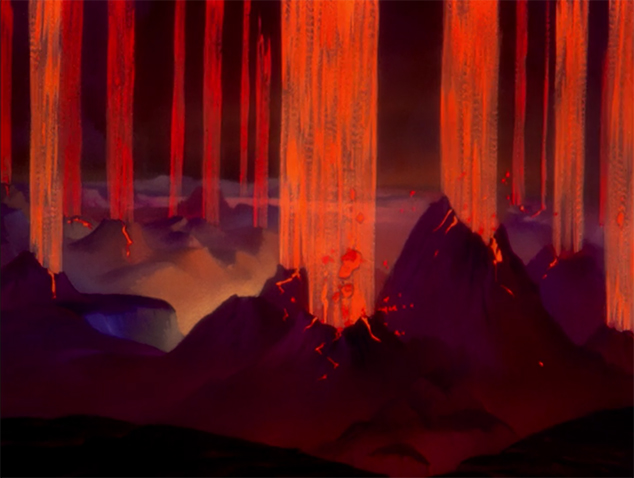
As we enter the atmosphere, volcanos begin to erupt, and whirlwinds of fire form at their mouths. Lava bubbles and boils on the ground, flowing down mountains and reshaping the landscape. As the lava hits the water, it sets off a massive storm; whirlwinds and waves exploding in chaos. When the storm finally quiets, we go deep into the ocean to watch life begin to develop. Single-celled creatures split off and reproduce and evolve, becoming more and more complicated forms of life. Jellyfish and fish emerge, one fish in particular crawling out on land.
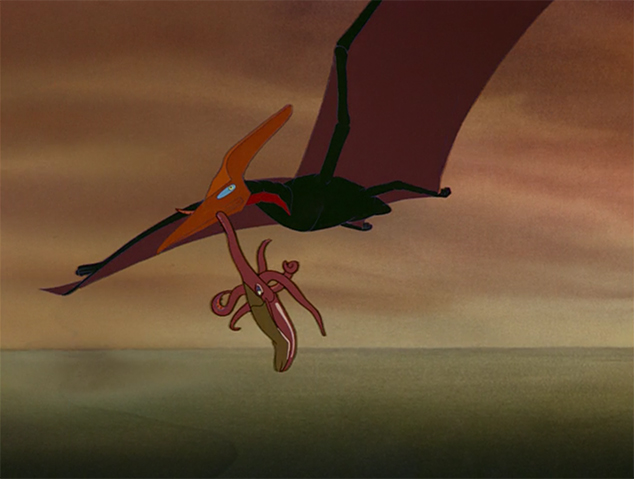
Suddenly we are in the age of aquatic reptiles, and we watch Plesiosaurs and Mosasaurs swim through the oceans, while Pterosaurs watch them from the cliffs above. From here, we quickly transition the age of the dinosaurs. We follow a variety of ancient creatures, large and small, as they go about their business, unaware that they are being watched by the king of the dinosaurs himself, the Tyrannosaurus Rex. As it begins to storm, the massive beast charges from the jungle and singles out an unfortunate Stegosaurus. The Stegosaurus puts up a valiant fight, but he is no match for the T-Rex, who breaks his neck and roars triumphantly, as the other dinosaurs watch from a safe distance.
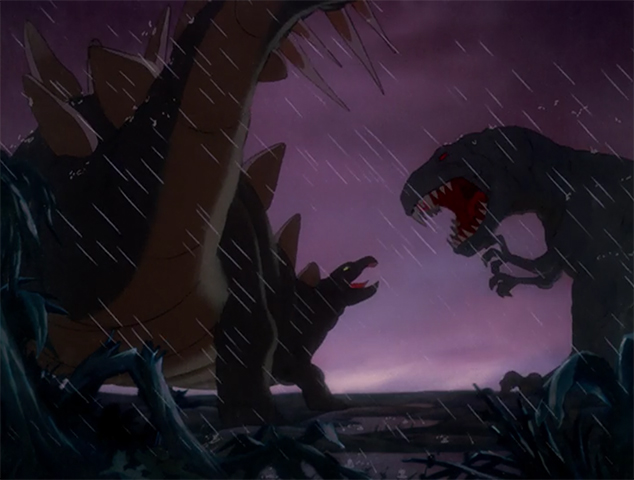
Finally, we reach the end of the age of the dinosaurs. As the earth is scorched by the sun, the dinosaurs weakly plod through the desert, searching in vain for water, one by one succumbing to the elements, predator and prey alike, dying in the desert side by side until there is nothing left of them but footprints and bones. Suddenly the earth is torn apart by cataclysmic earthquakes. The bones are quickly buried and the seas boil up, massive storms covering the earth and quieting as suddenly as they began.
Intermission/Meet The Soundtrack
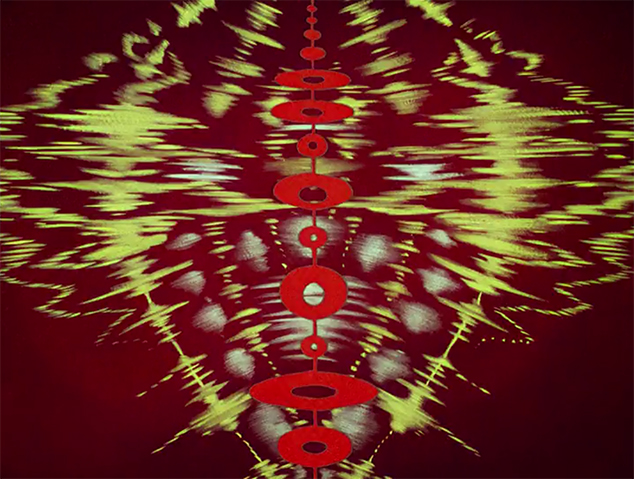
After a brief intermission, we go back to the orchestra to watch them tune their instruments. They have a quick little jam session with some jazz music and improvisation, before Deems Taylor returns to introduce us to “The Soundtrack,” an abstract representation of the score. This character is a line of vibrating light that moves with the sound of whatever instrument is playing. There is a bit of banter between Taylor and the soundtrack, as much as a non-verbal, abstract depiction of sound itself can banter, and then we move on.
The Pastoral Symphony – Ludwig van Beethoven
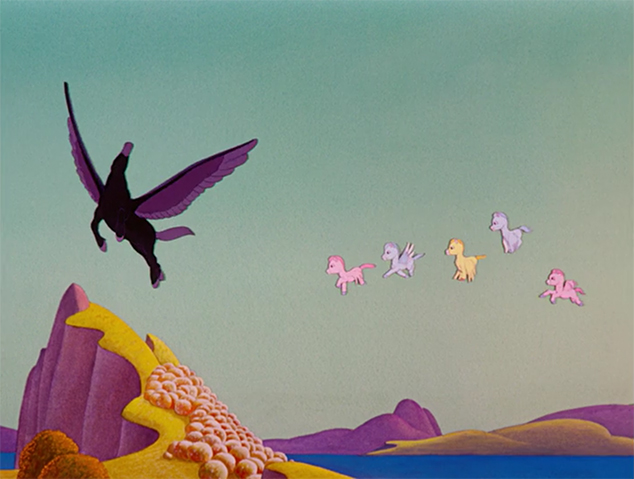
In this segment, we are taken to a mythological version of ancient Rome. The land is populated by a wide variety of mythical beasts. Unicorns and fauns play in the fields as a clutch of baby Pegasus are taught to fly and swim by their parents. The family joins a huge flock of Pegasus, and we leave them to enter a forest where a group of centaurettes are getting ready for courtship.
The centaurettes are assisted by cherubs who dress them, braid their hair, and do their makeup. As they finish, a group of centaurs gallops up and begin to pair off with the centaurettes. As the cherubs happily watch the new couples, they notice a single centaur sitting sadly by himself. As luck would have it, there is also a centaurette without a mate, but they have not noticed each other and are both sitting by themselves, with no one left around them. The cherubs conspire with each other and bring them together.
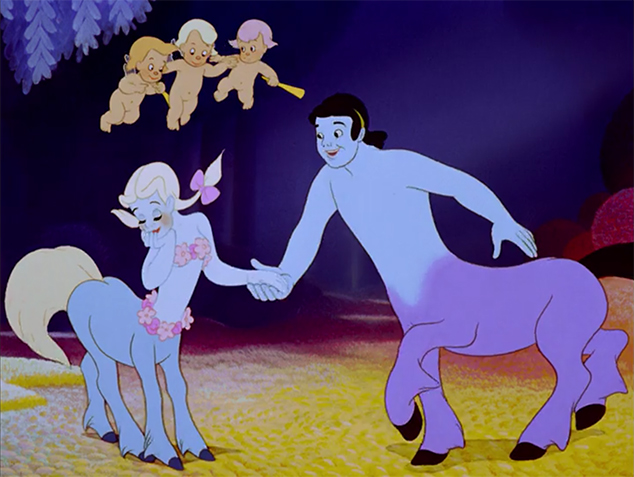
After all the centaurs have found a mate, they all gallop off to a party with Bacchus, the god of wine. The centaurs gather grapes, while the fauns stomp them. Bacchus shows up drunk already, riding a tiny, goofy donkeycorn, flanked by zebra centaurette attendants. The crowd of mythical creatures dances together, but the party is cut short by Zeus who shows up and creates a storm, throwing lightning bolts to the earth. The storm grows worse, and all the creatures race for shelter. Bacchus tries to hide under his vat of wine, but it’s destroyed.
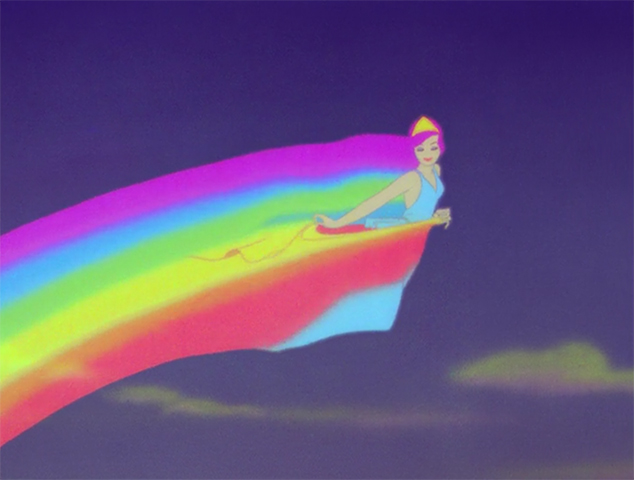
When Zeus finally tires of his fun, the storm ends, and Iris spreads a rainbow across the sky. As Bacchus drinks his spilled wine, the cherubs and baby Pegasus play in a rainbow. As the day ends, the creatures gather to watch Apollo and Morpheus transition the day into night.
Dance of the Hours – Amilcare Ponchielli
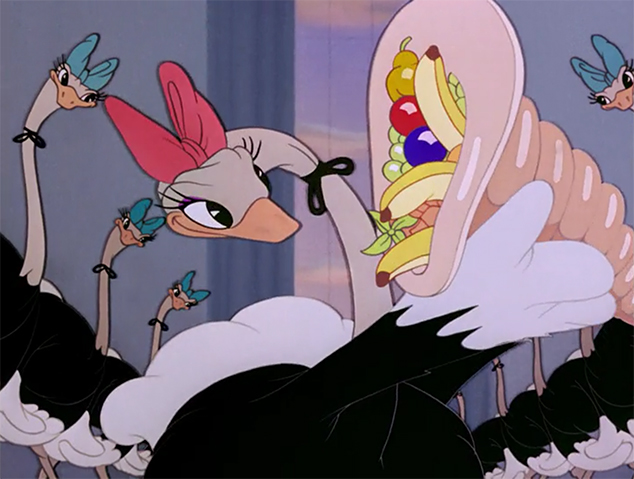
Deems Taylor introduces this segment as a straightforward ballet, but as we pan into the palace, we see that it is anything but ordinary. The dancers are all ostriches. The lead dancer, Madame Upanova, feeds a variety of fruit to her troupe, and they race around the courtyard fighting for the last of the grapes which are lost in a small pool containing a hippo, Hyacinth.
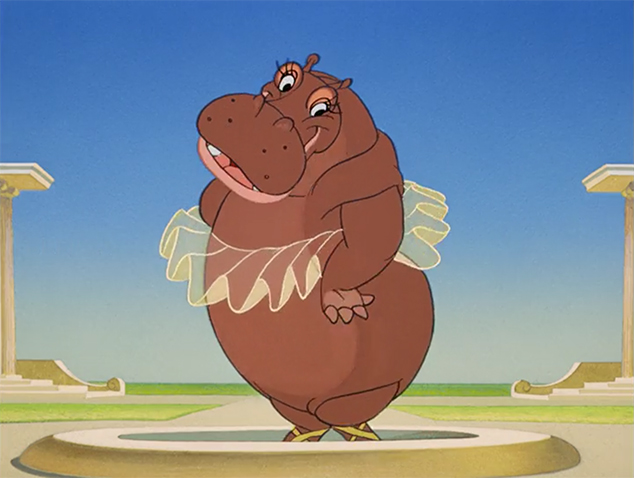
As Hyacinth emerges from the water, more hippos appear with a tutu and makeup for her. When she is ready, the group all dance around the courtyard. After dancing for a few moments, she tires, and the others help her to a chair. When she is asleep, another group of dancers emerges, elephants, lead by Elephanchine, who all begin to blow bubbles around her and dance though the courtyard, creating tutus for themselves out of bubbles.
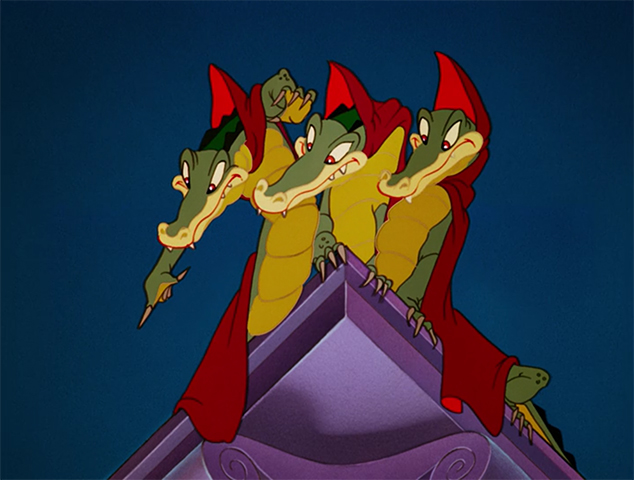
When the elephants have finished, it is night, and another group of dancers emerges, alligators wearing large red capes. The leader, Ben Ali Gator, dances with Hyacinth, seemingly to woo her, but she rejects his advances and leads him on a merry chase around the courtyard and through the pillars, spinning around the pool. The other hippos join her but the rest of the alligators chase them into the palace where the ostriches and elephants are hiding. The alligators are eventually defeated, but the dance ends with the palace in ruin.
Night on Bald Mountain – Modest Mussorgsky
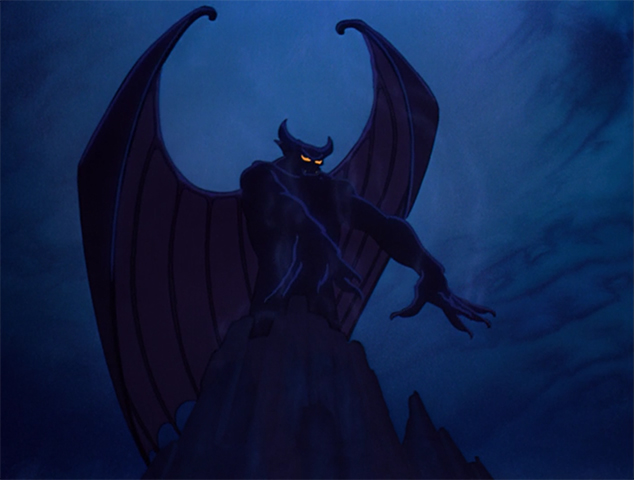
The darkest segment of the movie by far, and one of Disney’s darkest creations to date. A massive demon, Chernabog, awakes on top of Bald Mountain and summons evil spirits, hideous creatures, and the souls of the dead to dance for him. He torments them all night, transforming them and burning them, grinning maniacally as they are attacked by harpies, sucked into the lake of fire, and dragged into the void.
Ave Maria – Franz Schubert
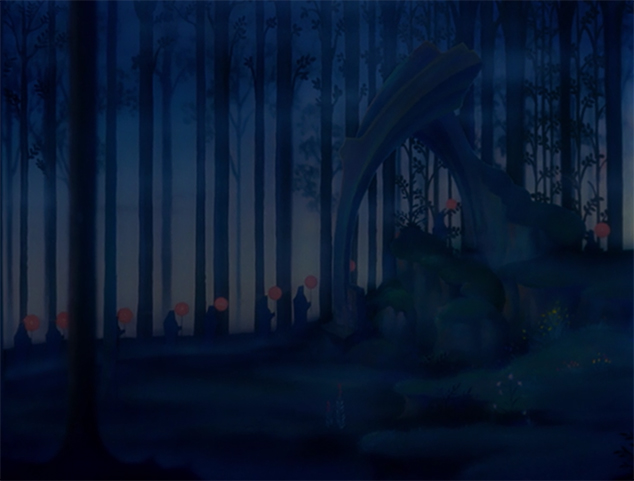
Transitioning from the scene of horror, Chernabog and his demons are driven away by the sounds of church bells ringing through the night. As the spirits return to their graves, Chernabog stretches his wings, folding them around himself and goes to sleep. As the sky grows lighter, a procession of monks carrying torches appears. As they walk through the forest and the ruins of a cathedral, a choir sings Ave Maria, and we slowly exit the trees as the sun begins to rise, and we fade to black.
Final Thoughts
Fantasia is one of the most amazing animated films ever created. It is my favorite animated film, if not my favorite film of all time. Every frame is a work of art, and there is no end to the amount of enjoyment that one can take away from this movie. It is a masterpiece in every sense of the word.
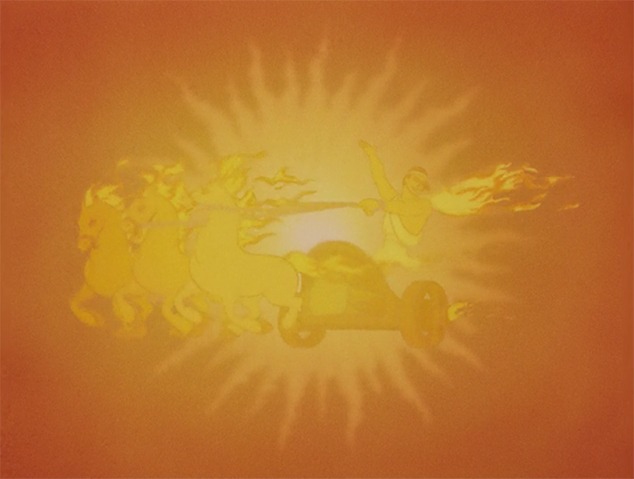
What are your thought on Fantasia? What is your favorite segment?
Edited by: Kelly Conley


